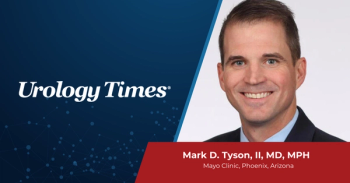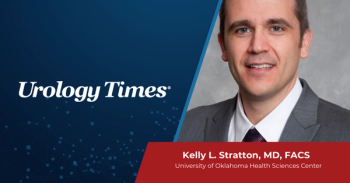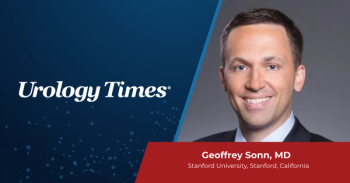
Thriving in Urology: Dr. Amy Pearlman interviews Dr. Stacy Loeb
"I think having both the clinical and the research piece is very complementary and really helps to keep me feeling happy and motivated," says Stacy Loeb, MD, MSc, PhD (Hon).
“Thriving in Urology” is a new video series hosted by urologist Amy M. Pearlman, MD, of the Prime Institute in Coral Gables, Florida. Each video will contain conversations on combating burnout by cultivating balance within one's work life. In this installment, Pearlman interviews Stacy Loeb, MD, MSc, PhD (Hon), regarding her various roles in clinical practice as well as social media. Loeb is a professor in the departments of urology and population health at NYU Grossman School of Medicine and Perlmutter Cancer Center in New York, New York.
Pearlman: All right, folks, so this section is really talking about 1 way to combat burnout. I have this hypothesis that some of the happiest and most successful and fulfilled urologists that I know actually don't have what we would consider to be the best work-life balance, but they have incredible balance within their work. And so when I think about this topic, Dr. Stacy Loeb immediately came to mind as someone that I had to interview in this realm. So Dr Loeb, thank you so much for being with us today.
Loeb: Thank you for the invitation.
Pearlman: So let's jump right in. I know that you wear a lot of hats, and I want you to discuss some of the hats that you wear, and maybe beginning from where your career began, and how some of those hats have evolved over your career.
Loeb: Thank you for the opportunity. I think my career has always been a combination of clinical and research. Starting out, it was 60% clinical and 40% research, and over time, that's evolved to exactly 50/50. I'm actually really happy with this split. I feel like it's a perfect combination of clinical and research. First of all, I moved all my clinical days to the middle of the week, so just Tuesday, every other Wednesday, and Thursday. So that's certainly something that has helped with quality of life. It's really nice having research days on Mondays and Fridays, which also aligns with a lot of conferences. That way, I'm able to attend meetings without taking off clinical time on a frequent basis.
But really, I think having both the clinical and the research piece is very complementary and really helps to keep me feeling happy and motivated, because the patients are always asking questions, and often we don't know the answer, and their family members have their own questions and unmet needs. A lot of these conversations that happen in clinic really provide the research questions that are most pressing for us to answer. It's very rewarding to then go and do the research, and then to come back to the clinic and say, "Actually, we looked at this and here's what we found." And so this is kind of what I think of as the cycle of life. It helps to keep me engaged and motivated to keep going.
Pearlman: And then let's think about some of the other hats that you wear, because you do a lot of international travel, and you do a lot of advocacy work, and you work a lot with different support groups, and you're on the radio. When did you start wearing those hats?
Loeb: That's a good question. I really think all of this public-facing communication is very important. I don't think it gets enough attention during medical school where, there's a small communication section, but it's mainly just about patient-physician communication, like in the medical encounter, not really any training on media communication or speaking to community members. But that is so important because there's such a lack of awareness about a lot of the conditions that we treat. There's a lot of taboo in society about a lot of the conditions that we treat, and just getting these conversations out in the open is really so important. So I started doing the radio, gosh, almost 12 years ago now, when my boss actually suggested this opportunity to me.
I have to say, I was a little bit reluctant about that at first, just because I thought of myself primarily as a physician and a researcher, so I didn't really have any particular media aspirations, I would say. But then, after doing it for a little period of time, I really realized that that may even be the place where I've made the most difference in my career, more so than actually in my own clinic, where I only, obviously, can see a limited number of patients myself, or with the research studies that we do, because talking to large audiences of people and discussing important topics, whether it's prostate cancer, men's health, whatever it may be, these big discussions are what really need to happen, and if that leads somebody to go get a screening test that they wouldn't have gotten, or to receive care for a sexual issue that they've been suffering in silence, that is just also very rewarding.
Pearlman: So was it this initial radio opportunity that really opened up your eyes and allowed for more opportunities related to social media and you building your digital platform?
Loeb: The social media sort of happened in a separate way, because when I was giving a lecture in Australia about prostate cancer, there were questions coming in real time through Twitter. And so I thought, "My gosh, I don't know if this is the most powerful or the most creepy thing in the world, but I definitely need to see what's happening with these platforms." But similar to the radio, this is just critical for dissemination, because even if you're a brilliant scientist doing the absolute best research in the world, if you're not sharing it with all of the key stakeholders, whether it's health care professionals, other scientists, patients and families, [and] the general public, then your research is not having the most impact that it can have. There are so many different social networks and conventional media platforms available. Obviously, some people are more comfortable with video vs written; whatever it may be, there are a lot of options out there, so I think it's a great way for people to get involved in whichever media opportunity that they prefer to help spread education and share research and evidence.
This transcription was edited for clarity.
Newsletter
Stay current with the latest urology news and practice-changing insights — sign up now for the essential updates every urologist needs.

















